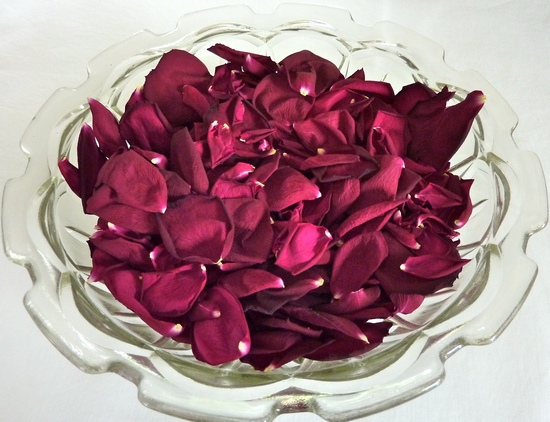ROSE POTPOURRI




 Dried fragrant plants were used throughout Europe in medieval times and during the sixteenth and seventeenth centuries as the equivalent to today's air fresheners. Damp air rose from earthen floors, so herbs that gave fragrance when stepped upon were in much demand. Commonly used species were camomile, lavender, hyssop, sage, thyme, costmary, meadowsweet, basil, balm and the scented rush Acorus calamus. John Gerard, the English herbalist, mentioned the practice of strewing herbs on the floor, and all English monarchs up to George IV had a 'Strewer of Herbs' as an official appointment. Dried fragrant plants were used throughout Europe in medieval times and during the sixteenth and seventeenth centuries as the equivalent to today's air fresheners. Damp air rose from earthen floors, so herbs that gave fragrance when stepped upon were in much demand. Commonly used species were camomile, lavender, hyssop, sage, thyme, costmary, meadowsweet, basil, balm and the scented rush Acorus calamus. John Gerard, the English herbalist, mentioned the practice of strewing herbs on the floor, and all English monarchs up to George IV had a 'Strewer of Herbs' as an official appointment.
Today the art of strewing has died out, but essential oils are still used to fumigate with more modern methods that include evaporation from rings heated on electric light bulbs. The equivalent of many of the practices which reached their height as a reaction to the poor hygiene of medieval Europe is the humble pot-pourri.
The word "potpourri" comes into English from the French word "pot-pourri." The French term has two connotations. It is the French name for a Spanish stew with a wide variety of ingredients called "olla podrida." Literally, however, the word "pot" in French has the same meaning as it does in English, while the word "pourri" means rotten.
Many pot-pourris can be bought cheaply which use wood shavings as a base into which fragrant oils are impregnated. To make a true pot-pourri with leaf, flower and spice ingredients takes time and considerable adjustment of moisture level using the traditional orris root and salt.
Below is a relatively easy recipe for you to make Pot-Pourri at home.
Ingredients
Petals of 40 strongly scented roses (for example Rosa
centitolia varieties)
Handful of lavender flowers
Handful of lemon verbena leaves
Handful of mint leaves
Handful of calendula and delphinium
flowers (for colour)
12g (½oz) oil of lavender
12% (½oz) oil of geranium
A few cinnamon sticks
25g (1oz) ground nutmeg
25g (loz) cloves (whole)
25g (loz) coriander seeds
100g (4oz) salt
100g (4oz) orris root powder
Method
Collect the rose petals when no moisture is on them and allow them to dry quickly in an airy place away from bright light. When dry, layer them with salt in an airtight jar. Shake daily.
Dry the other leaves and flowers and add to the roses after five days of drying.
Add the oils to the orris powder and then add the spices. Add the dry flowers and leave for four weeks in a covered bowl, stirring now and then. Adjust the moisture level with more salt (to dry) or more orris (to moisten). Decant into bowls for use. The pot-pourri can be freshened with rose oil as needed.
Back to the top of the page


|